This article was co-authored by Isabelle Garson. Isabelle Garson is a Social Media Expert based in the San Francisco Bay Area. With 10 years of experience, she works in social media strategy and content production. She specializes in music and cannabis marketing and has worked with international touring artists. Isabelle studied graphic design at the Academy of Art University. Additionally, she holds a certification from Sprinklr Research Analyst Pro.
There are 8 references cited in this article, which can be found at the bottom of the page.
wikiHow marks an article as reader-approved once it receives enough positive feedback. This article has 27 testimonials from our readers, earning it our reader-approved status.
This article has been viewed 1,475,816 times.
Under international law, copyright is the automatic right of the creator of a work. This means that as soon as you write down a song or make a recording, it's copyrighted. In order to enforce the copyright, though, you'll need to be able to prove your ownership. In the US, that means you need to register your song with the U.S. government's copyright website. This will make it much easier to assert your rights if your copyright is infringed. Read on to learn more about how to protect your song with a copyright.
Steps
Registering Your Song Online
-
1Make a copy of your song. You could make a CD, USB drive, mini-disc, cassette tape, MP3, LP, record it on video, or write out the sheet music. All of these methods may be used to create a hard copy recording of your song. As soon as it's recorded, it's copyrighted - now you just need to have it registered.
-
2Go to the US government's copyright website. Click on the Electronic Copyright Office, where you can make an online copyright filing. Registering online is simple, and it will take about 4.5 months to be processed. This is a much shorter process than registering by mail, which can take up to 15 months. [1]Advertisement
-
3Register a free account. Click on "new user" to open your account. You'll need to give your name, address, country (if not from the USA), phone details, and preferred contact method.
- Once you have an account opened, you can use this every time you'd like to make a copyright application. The account allows you to monitor your applications and to find various types of information concerning copyright. There is also a tutorial on making a claim provided.
-
4Complete your online copyright application. Click on "Register a New Claim" under "Copyright Services," located in the left-hand column of your account. Be prepared to answer questions about yourself, the work you're seeking to copyright and where you'd like the copyright certification to be sent.
-
5Pay the $35 fee. You can pay via either credit or debit card, electronic check, or a copyright office deposit account.
-
6Upload an electronic copy of your work. Many types of files are accepted, but check the Copyright Office's complete list to ensure that you're not sending in an incompatible file.[2]
- If you prefer not to send an electronic copy, you can send a hard copy (non-returnable) and it has to be sent in a box, not an envelope. You can make a shipping address slip from the site.
-
7Wait for your copyright application to be processed. You can log back into your account to check the status of your claim at any time.[3]
Registering Your Song by Mail
-
1Obtain form CO.[4] You can either download it from the US Copyright Office website or call the office at (202) 707-3000 and request that the forms be sent to you. You may also request the form you need by mail at US Library of Congress, Copyright Office, Independence Avenue, S.E., Washington, D.C. 20559.
- Form SR is the right form to fill out to register a copyright for sound recordings.
- Form PA, the form for performing arts recordings covers recordings of live performances.
- Form CO may be used for any type of sound recording or performing arts recording.[5] Since the fee for forms PA and SR is currently $65 and the fee for form CO is $45, consider carefully which meets your needs most. Visit http://www.copyright.gov/forms/ for more information.
-
2Fill out the form. Read the instructions carefully and fill it out exactly how it is explained. If you have any questions, contact the Copyright Office.
-
3Place required materials into a Package. The Package should include the filled out form, the specified payment, and a non-returnable copy of the song.
-
4Send your package to the US Copyright office. Mail it to the following address: Library of Congress, Copyright Office, Independence Avenue, S.E. Washington, D.C. 20559-6000.
-
5Wait for the certificate of registration. Have patience because this part of the registration process can take a while. It can take up to 15 months if you've filed by mail, according to the Copyright Office FAQ, and averages around 8 months currently. The good news is that your copyright is effective from the day that your materials are received by the Copyright Office. You'll receive a certificate of registration when it does arrive.
Knowing What to Avoid
-
1Avoid poor man's copyright. There is a long-standing myth in the music industry that the old-fashioned fix of recording a song, placing it in an envelope and mailing it to oneself guaranteed copyright. The post date on the stamp was supposed to serve as proof of the date of origin of the song, provided the envelope remained sealed. However, this method didn't stand up in various court cases and has since been discredited.[6] Moreover, given that your copyright exists on creation, and that an envelope's seal can be carefully unsealed and resealed, this method does seem rather fallible.
-
2Be aware of the Berne Convention. If your country is a member of the Berne Convention, copyright in a song comes into existence when you create it. It does become more complicated when there are several creators who have contributed to the song, but there are rules governing these "layers." It's best to seek legal advice in that situation.
- The U.S. copyright office is the only one among the Berne Convention's member countries offering a method to register content of the song (lyrics, melody, chord, etc.). Unfortunately in all other countries, only the title of the song is recorded. The value of the protection afforded is significantly reduced. However, your possession of a dated original is all the proof of authorship that you need in most countries, assuming there is any dispute.
Expert Q&A
-
QuestionCan you use any copyrighted song on TikTok?
 Isabelle GarsonIsabelle Garson is a Social Media Expert based in the San Francisco Bay Area. With 10 years of experience, she works in social media strategy and content production. She specializes in music and cannabis marketing and has worked with international touring artists. Isabelle studied graphic design at the Academy of Art University. Additionally, she holds a certification from Sprinklr Research Analyst Pro.
Isabelle GarsonIsabelle Garson is a Social Media Expert based in the San Francisco Bay Area. With 10 years of experience, she works in social media strategy and content production. She specializes in music and cannabis marketing and has worked with international touring artists. Isabelle studied graphic design at the Academy of Art University. Additionally, she holds a certification from Sprinklr Research Analyst Pro.
Social Media Expert You're good to use it if it's part of their audio base, because the original artist is getting a pay per stream when their content is used. So, the best way to make sure that you aren't breaking any copyright laws is to use the native audio in TikTok (or any platform that allows you to add music to your content).
You're good to use it if it's part of their audio base, because the original artist is getting a pay per stream when their content is used. So, the best way to make sure that you aren't breaking any copyright laws is to use the native audio in TikTok (or any platform that allows you to add music to your content). -
QuestionCan the CD have several songs in it or do you have to pay for each song
 Community AnswerYou can register a full album with multiple songs. The single copyright fee covers the whole album.
Community AnswerYou can register a full album with multiple songs. The single copyright fee covers the whole album. -
QuestionHow can I check to see the names of all of the songs I have copywritten already?
 Community AnswerIf you have registered your songs with the U.S. Copyright Office, you should be able to open an online account and find your records that way. Go to www.copyright.gov to get started.
Community AnswerIf you have registered your songs with the U.S. Copyright Office, you should be able to open an online account and find your records that way. Go to www.copyright.gov to get started.
Warnings
- Watch out for misleading links and commercial copyright companies. If you search online for "U.S. Copyright Office," you may find yourself getting lead to for-profit companies, rather than the government website, and end up paying unnecessary filing fees!⧼thumbs_response⧽
- Make sure that your music is totally original. The rap hit "Ice Ice Baby" by Vanilla Ice copied the bassline from Queen and David Bowie's song "Under Pressure" and Vanilla Ice was sued.⧼thumbs_response⧽
- The US advice assumes that you are a US citizen. In 1989, the US became a party to the Berne Convention,[7] meaning that if you're from outside the US, you're not required to register with the US Copyright Office before you can make a claim in a US court.[8] However, you may wish to seek legal advice about availing yourself of the US registration process should you wish to have your music aired, heard, performed, or otherwise used in the US market.⧼thumbs_response⧽
Things You'll Need
- Any tangible version of the music (i.e. recordings, sheet music, etc.)
- $50 paper; $35 online
- Internet access (easiest, fastest method)
- PA, SR, or CO Forms
Expert Interview

Thanks for reading our article! If you'd like to learn more about copywriting, check out our in-depth interview with Isabelle Garson.
References
- ↑ http://www.copyright.gov/help/faq/faq-what.html#certificate
- ↑ See the list at http://www.copyright.gov/eco/help-file-types.html
- ↑ http://copyright.gov/eco/eco_tutorial.pdf
- ↑ http://www.copyright.gov/forms/formsr.pdf
- ↑ http://www.copyright.gov/forms/
- ↑ http://www.cleverjoe.com/articles/music_publishing_copyright.html
- ↑ http://www.copyrightservice.co.uk/copyright/p08_berne_convention
- ↑ US Copyright Rules, http://www.copyrightservice.co.uk/register/usa_registrations more on US Copyright rules
About This Article
To copyright a song in the US online, start by making a copy of your song using a CD, USB drive, MP3, or writing out the sheet music. Next, go to the US government’s copyright website, click on the Electronic Copyright Office, and register for a free account. Then, click on “Register a New Claim,” fill out the copyright application, and pay the required fee. Finally, submit your song by uploading an electronic copy or mailing a hard copy. For more tips, like how to prepare your application package if you're registering your song by mail, read on!
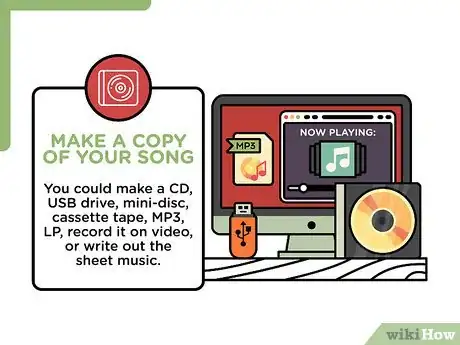
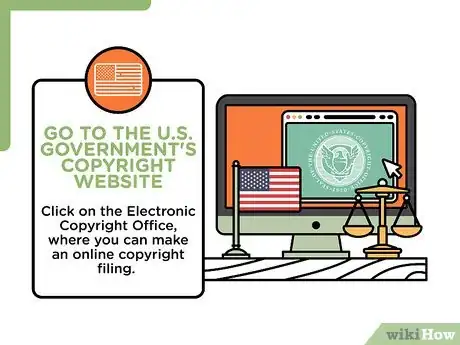
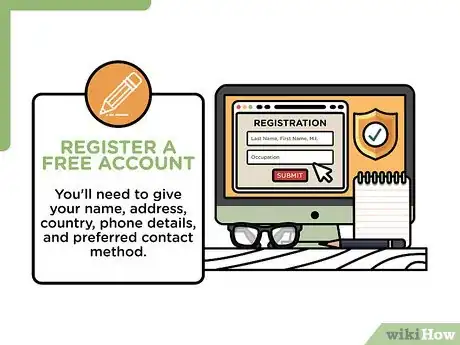
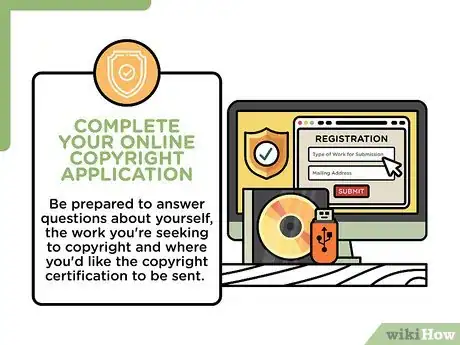
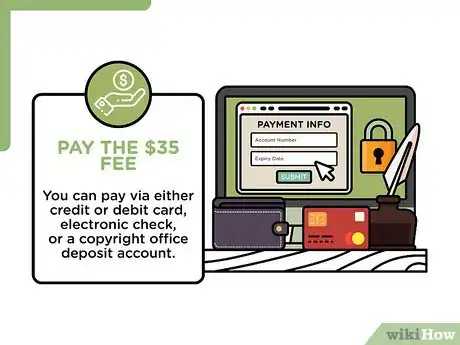

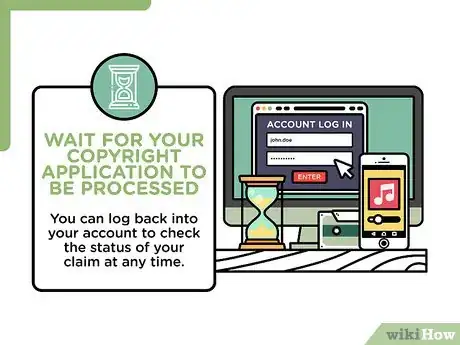
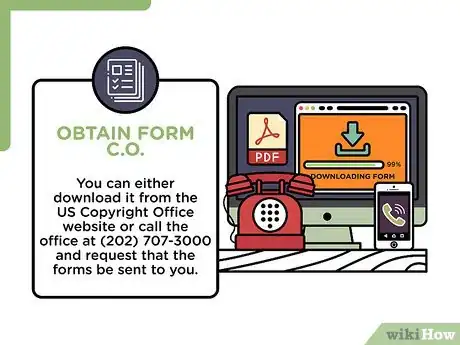
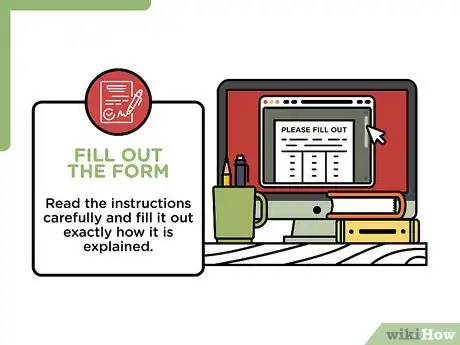
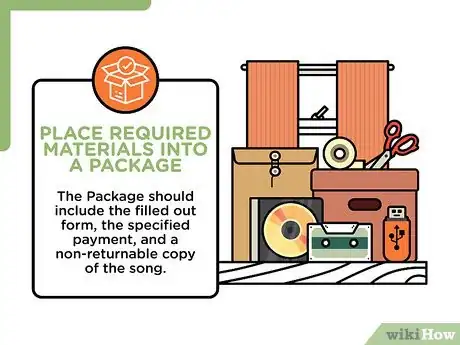
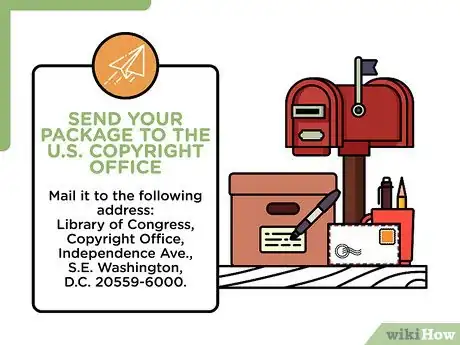
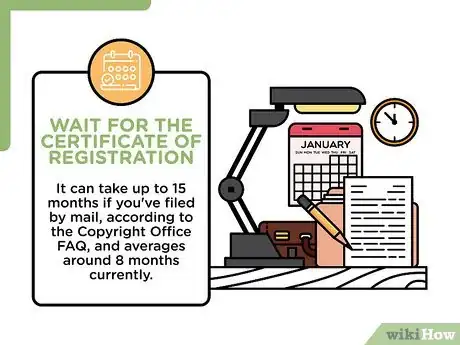

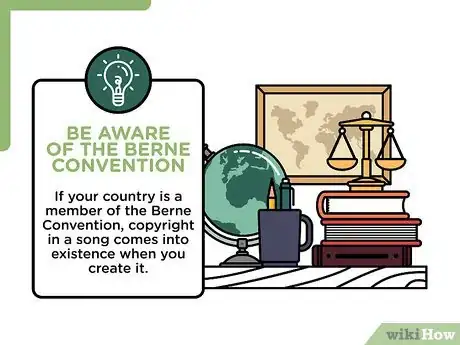




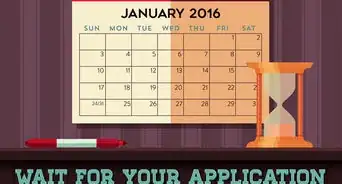

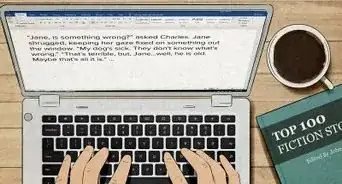


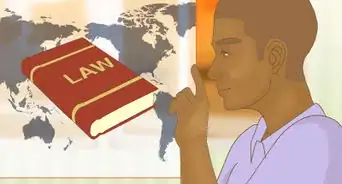

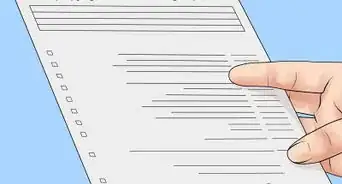
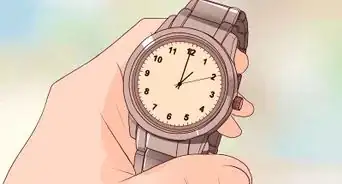
-Step-13.webp)
















































